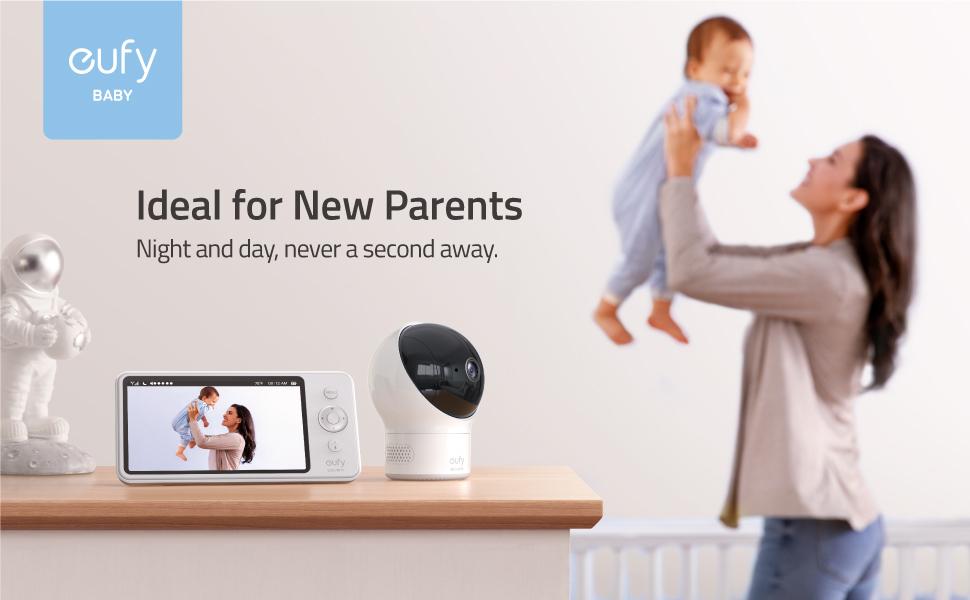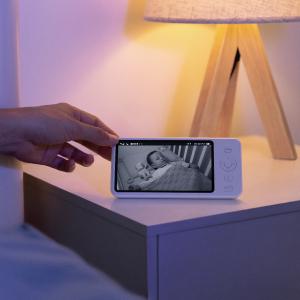How to Choose the Best Baby Monitor: Helpful Tips for New Parents
There’s a lot to figure out when you bring a new baby home for the first time. One of the most important things you can buy to ensure your child’s safety and peace of mind is a baby monitor. It might be challenging for first-time parents to select the best baby monitor for their family among the wide variety of monitors available. Here are some things to consider while choosing a baby monitor to make your life a little easier.
Tips for Choosing the Best Baby Monitor
1.Assess What You Need
Before delving more into the abundance of options, take some time to assess your specific needs. Consider your home’s square footage, the area you need to monitor, the type of camera you like (fixed or pan-and-tilt), and whether you need extra features like temperature sensors or two-way audio communication.
2.Determine the Type
Baby monitors can be broken down into a few different types, the most common of which are the audio-only, video, and smart varieties. There are two main types of monitors: audio monitors, which only transmit sound, and video monitors, which also communicate images. Some versions of smart monitors also include extras like smartphone connectivity and the ability to work with other smart home gadgets. There is also a non wifi baby monitor and a Wi-Fi-connected baby monitor available in the market. Choose the one that fits your needs and preferences the best.

3.Signal’s Reach and Relative Strength
Think about how far away you are from the infant and how far the monitor can see. Make sure the monitor’s signal strength and range are enough for your needs, especially if your home is large or you plan to use the device in an open area. If you want to use the screen outside, this is crucial.
4.Check for Safety Features
If you’re concerned about the feed being hacked or accessed by an unauthorized party, look for a baby monitor that supports encryption or secure connections. When making decisions about your infant, safety and confidentiality should always come first.
5.Low-light Capabilities and Night Vision
Having night vision capabilities is crucial when monitoring your infant late at night or in low light. If you always want a dependable view of your child, day or night, a baby monitor with good night vision is a must-have.

6.Battery and Energy Source Dependability
The baby monitor’s power source and battery life are important considerations. There are two types of battery usage in monitors: rechargeable and user-replaceable. Choose a version that works for you and has an acceptable battery life to cut down on the frequency of battery charging and replacement.
7.Additional Features
Consider adding features to your monitoring setup like temperature sensors, lullabies, two-way talk, and motion detectors to make the experience more convenient for you. These extras have the potential to improve the usability and practicality of your baby monitor.
8.Reviews and Branding
Before making a final decision, it’s a good idea to read reviews published by reliable sources and compare different brands and varieties of the product in issue. Information about the features, dependability, and user-friendliness of various baby monitors may be found in both personal experiences and expert comments.
9.Consider Long-Term Use
Think about how long the baby monitor could last. Some baby monitors have continued use after the infant years, either as security cameras or for monitoring toddlers.
10.Set a Budget
Finally, you should create a budget that accommodates all your needs and wants. Because there is such a large range in baby monitor pricing, setting a spending limit in advance can be helpful.
Conclusion
In conclusion, it’s important to give some thought to your personal preferences and needs before settling on a baby monitor. The features, functionality, safety factors, budget, and user evaluations of a particular product can help new parents make educated decisions that will ensure the safety and well-being of their children and give them peace of mind.
